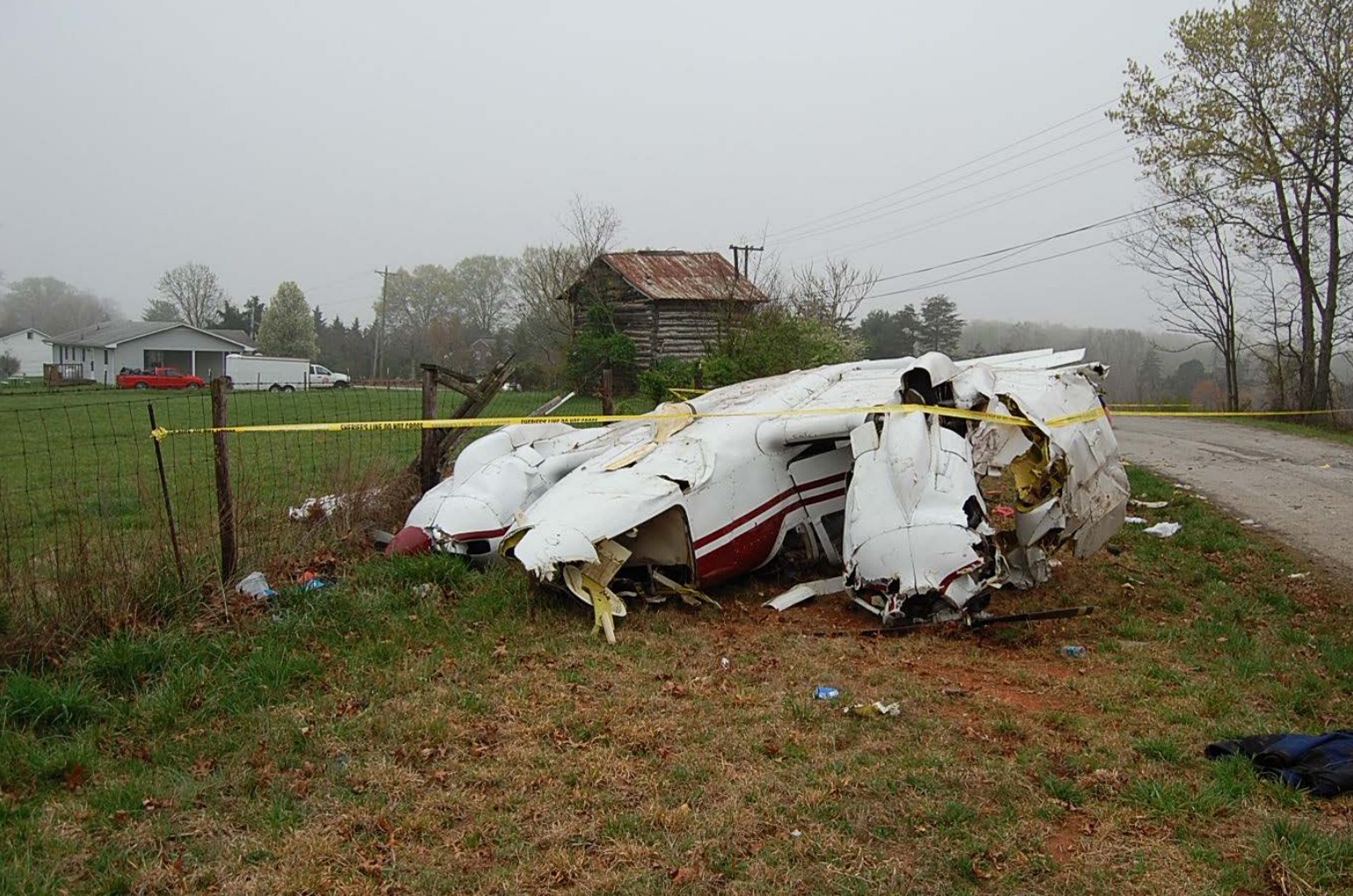
ASN Wikibase Occurrence # 185926
This information is added by users of ASN. Neither ASN nor the Flight Safety Foundation are responsible for the completeness or correctness of this information.
If you feel this information is incomplete or incorrect, you can submit corrected information.
| Date: | Sunday 27 March 2016 |
| Time: | 16:36 |
| Type: |  Piper PA-23-250 Aztec D |
| Owner/operator: | Private |
| Registration: | N22AM |
| MSN: | 27-4501 |
| Year of manufacture: | 1970 |
| Engine model: | Lycoming TI0-540 SER |
| Fatalities: | Fatalities: 0 / Occupants: 4 |
| Aircraft damage: | Substantial |
| Category: | Accident |
| Location: | Pittsylvania County, west of Brosville, VA -
 United States of America United States of America
|
| Phase: | Landing |
| Nature: | Private |
| Departure airport: | Charleston, SC (CHS) |
| Baltimore, MD (MTN) | |
| Investigating agency: | NTSB |
| Confidence Rating: |
The instrument-rated private pilot departed in instrument meteorological conditions (IMC) with the intention of flying visual flight rules (VFR) to his destination. About 90 minutes into the flight, the pilot advised air traffic control (ATC) that he was having problems with the right engine. The pilot switched fuel tanks, turned on the fuel pumps, and restored power to the right engine. A few minutes later, the pilot stated that he was in IMC and requested assistance. While diverting to another airport, the pilot reported to ATC that he had lost power in both engines. The pilot performed a forced landing on a highway, during which the airplane impacted a tree and came to rest inverted next to the road. No fuel was observed in any of the airplane’s fuel tanks during the on-scene examination, nor did the accident site display any signs of fuel spillage or blight. Other that the absence of fuel, no evidence of any preimpact mechanical anomalies were noted with the engines that would have precluded normal operation, and it is likely that the loss of power to both engines was the result of fuel exhaustion.
Probable Cause: The pilot’s improper fuel planning, which resulted in a total loss of engine power due to fuel exhaustion.
Accident investigation:
 |
|
Sources:
NTSB
FAA register: http://registry.faa.gov/aircraftinquiry/NNum_Results.aspx?NNumbertxt=22AM
Location
Images:

Photo: NTSB
Revision history:
| Date/time | Contributor | Updates |
|---|---|---|
| 27-Mar-2016 23:07 | Geno | Added |
| 29-Mar-2016 05:58 | Anon. | Updated [Narrative] |
| 21-Dec-2016 19:30 | ASN Update Bot | Updated [Time, Damage, Category, Investigating agency] |
| 16-Sep-2018 19:10 | ASN Update Bot | Updated [Nature, Departure airport, Destination airport, Source, Narrative, Accident report, ] |
| 17-Sep-2018 18:59 | harro | Updated [Source, Narrative, Photo] |
Corrections or additions? ... Edit this accident description
The Aviation Safety Network is an exclusive service provided by:


 ©2024 Flight Safety Foundation
©2024 Flight Safety Foundation